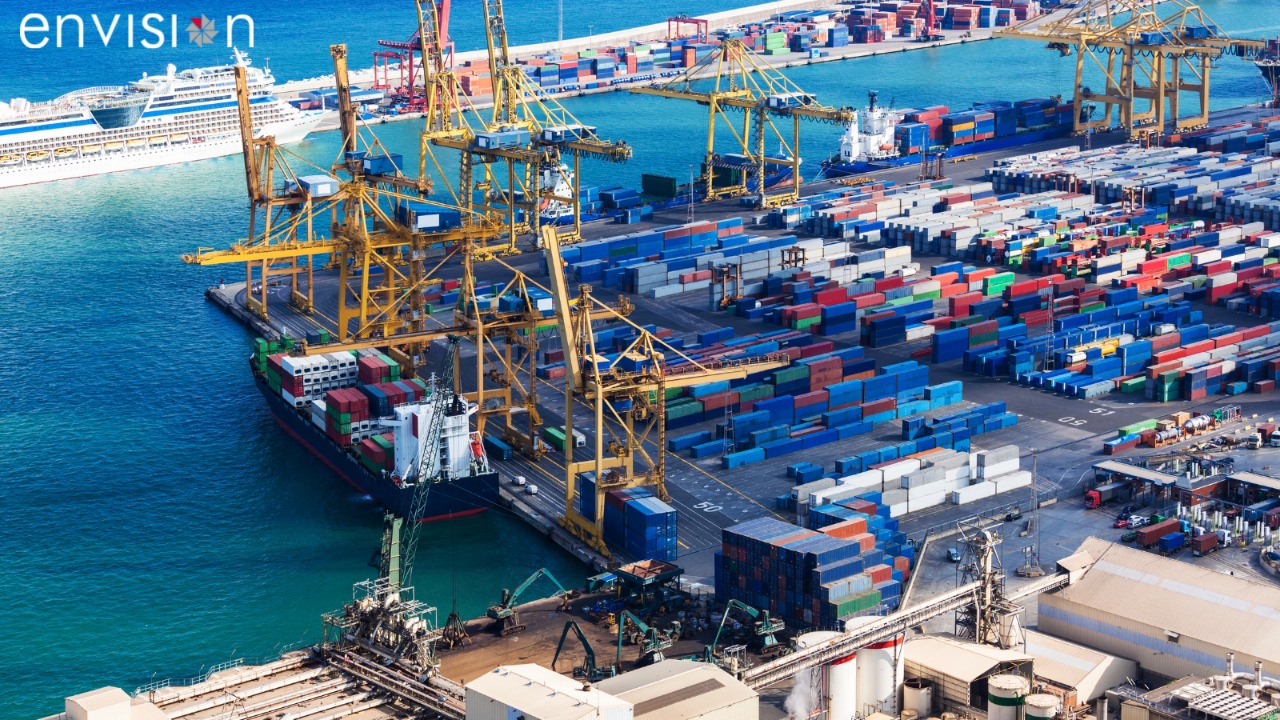Envision
Is there a future for the electronic Bill of Lading ?

International trade is growing at such an alarming rate that it is now globally indispensable. No country in the world can have any hope of economic prosperity without being a part of global trade. It is a true façade of globalization where the whole world has become a single marketplace in which people are enjoying goods, products, and services that are being brought to their footsteps through the use of international trade.
In transporting goods from one country to another, the mode of carriage is key. Today, we see that carriage of goods by sea is the most favored method of all just as it was centuries ago as it allows a carrier to transport the bulk of goods and products at a minimum cost in comparison to other modes of international transportation.
Actually, the carriage of goods by sea can be initiated using two fundamental methods which include a charter party and a bill of lading. However, these methods are fundamentally different from one another in several aspects as the charter party relates to the ship itself, while the bill of lading relates to the cargo aboard the ship. Bill of lading originated initially as a non-negotiable receipt in the Fourteenth Century where it was issued by the ship-owner to a merchant who did not wish to take the journey. At the time, the document constituted details relating to the description of the goods. Subsequently, it also endorsed the terms of the contract of carriage to resolve any disputes that may arise between the cargo owners and the ship owners.
Finally, in the Eighteenth Century, the bill of lading was used to dispose of the goods that were in transit by endorsing the bill and surrendering it to another party who was then able to demand the cargo upon arrival of the vessel.
What is a Bill of Lading?
A Bill of Lading is a document that the Carrier of goods issues to the “Shipper” of the goods. It’s a document to provide evidence or proof of shipment.
The three basic functionalities of a bill of lading are:
• Evidence of contract of carriage – between the consignor or shipper and the shipping line
• Receipt of goods – proof that the shipping line has received the cargo
• Document of the title of goods – the title holder of the bill of lading also owns the cargo. This is extremely important in International Trade as it provides ‘title’ as to who legally owns the cargo. Moreover, the Bill of Lading acts as evidence of Contract of Carriage, receipt of goods, and document of title to the goods.
A BOL contains information such as details of the shipping line, the pick-up date, name of the vessel used for transport, and other details
The owner of the cargo (the holder of theB/L) has the legal right to claim the goods or arrange to transfer ownership ofthe cargo to another party in the supply chain.
Traditionally (and even currently), the bill of lading, especially a negotiable one is issued as a physical paper document signed and stamped by the carrier, with a set number of originals.
The problem with paper bills of lading
Carriers continue to issue bills of lading predominantly in paper form. Cargo owners, bankers, and carriers alike seem reluctant to retire a document so elegantly straight forward and capable of such heavy lifting. Yet, problems associated with the use of paper are developing into serious handicaps that are more aggravated with each passing year.
The most prominent short coming of the traditional bill of lading is that it is a piece of paper, and unlike an electronic impulse, must be physically transported. If the shipper is lucky, the bill of lading is ready for pickup from the carrier the day after the vessel sails, but the average delay before the paper document is ready is three days, and it is sometimes not available for up to seven days. The documents must then be pouched overseas, generally directly to the consignee's customs broker, adding roughly four days. The customs broker must then surrender the document to the carrier, which takes at least one business day and possibly two, as a large percentage of steamship lines have now nationally centralized their customer service functions in one location, often not actually near any portcity.
If a bank is involved, as for a letter of credit, the delays become acute. Two more parties, the seller's bank, and the buyer's bank must each have an opportunity to examine the document, and must then transmit it by courier to the next party down stream. Additionally, paperbills of lading must be laboriously hand-checked, point by point, for discrepancies truly tedious duty that sometimes suffers from error. If the bank finds discrepancies, it must communicate with the parties to determine whether the discrepancies will be accepted or whether the documents must beredone.
If the consignee does not accept the discrepancies, the documents must go back to the starting point. Confirming banks, to avoid the risk of not being paid, generally, simply reject discrepant documents without checking with the applicant or the applicant's bank.
In recent years, the time allotted for the transmittal of the bill of lading has shortened as ocean vessel transit times have become shorter. Vessels are getting faster, but carriers are also changing vessel routing strategies. Further, port congestion has become aglobal crisis and carriers are pushing to get import cargo quickly off the pier.
Here comes the need for an electronic Bill of Lading (eBL)
New Electronic Bill of Lading Technology to Streamline Global Trade
Over the past few years, there have been advancements in technology that have transformed the traditional paper-based Bill of Lading into an Electronic Bill Of Lading (eB/L) format. This new technology is also referred to as an E Bill of Lading, Electronic Bill, or Digital Bill of Lading. The new Electronic Bills of Lading can provide many advantages for several parties involved in the supply chain.
What is an electronic Bill of Lading(eB/L) ?
An electronic Bill of Lading is a new electronic version of the bill of lading. The eB/L performs the same functions, and in addition it improves the speed, security and accuracy of information.
In the past, the transfer of important information relied on a physical Bill of Lading document being posted from the shippers to consignees in a different country. Using an eB/L, the data contained on the Bill of Lading can be transferred to other parties involved in the supply chain almost instantly.
Many believe that the electronic bill of lading will be a game changerin the shipping industry with its faster, efficient transactions, reduction in costs with greater security and less risk.
How Does an Electronic Bill Of Lading Improve the Import Export Process?
Upgrading to an Electronic Bill Of Lading process will bring a variety of benefits to many parties along the global supply chain. The traditional Bill of Lading process is quite manual, slow, and not easy to share to parties in the supply chain.
According to the Digital Container Shipping Association, the global container shipping industry could save up to $4 billion every year, if half of all Bills of Lading were dealt with in an electronic format.This is such a big number because the Bill of Lading affects many partie's individual processes and workflows when dealing with International supply chain shipments. Shippers will provide information and data to carriers to create the Bill of Lading, which is the neasily shared with Freight Forwarders, Consignees, Banks, and numerous other supply chain parties.
Upgrading from a completely manual, paper-based process to an electronic interface to capture the information and instantly transfer it to the relevant parties will reduce administration and operational costs for all parties involved. Ultimately, these time and cost savings will reduce the cost ofproducts and shipping, to reduce the final costs for end consumers.
Talk to us today to know how our solutions can accelerate your digital transformation
Let's Talk

































